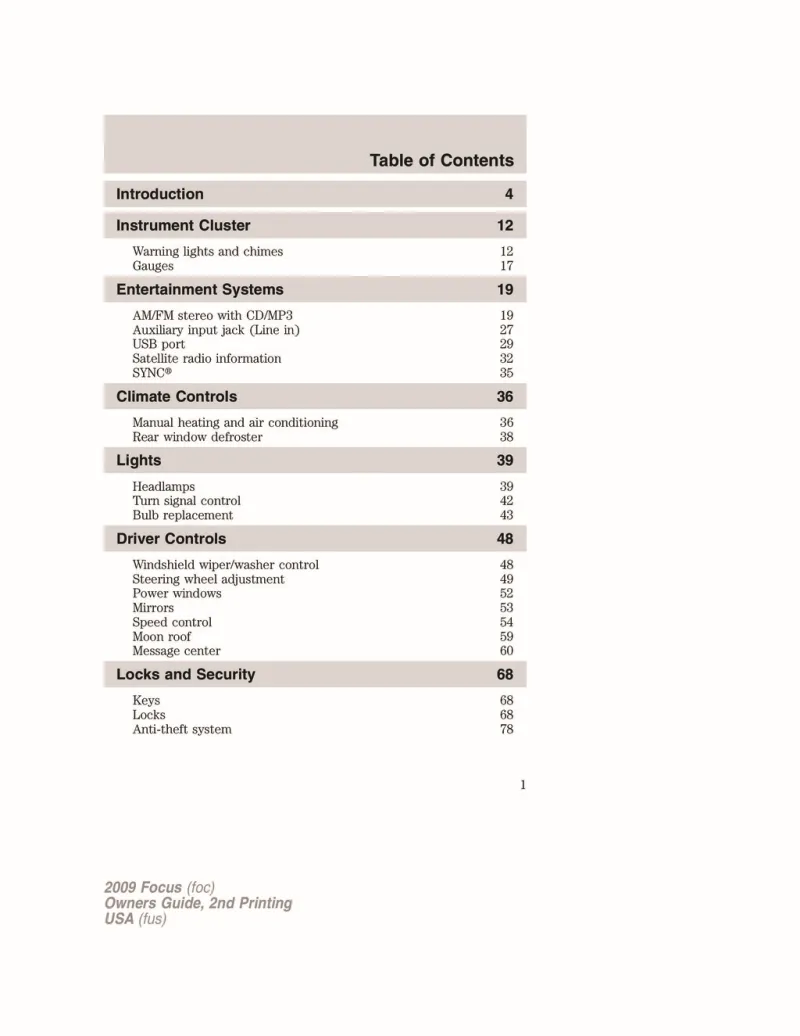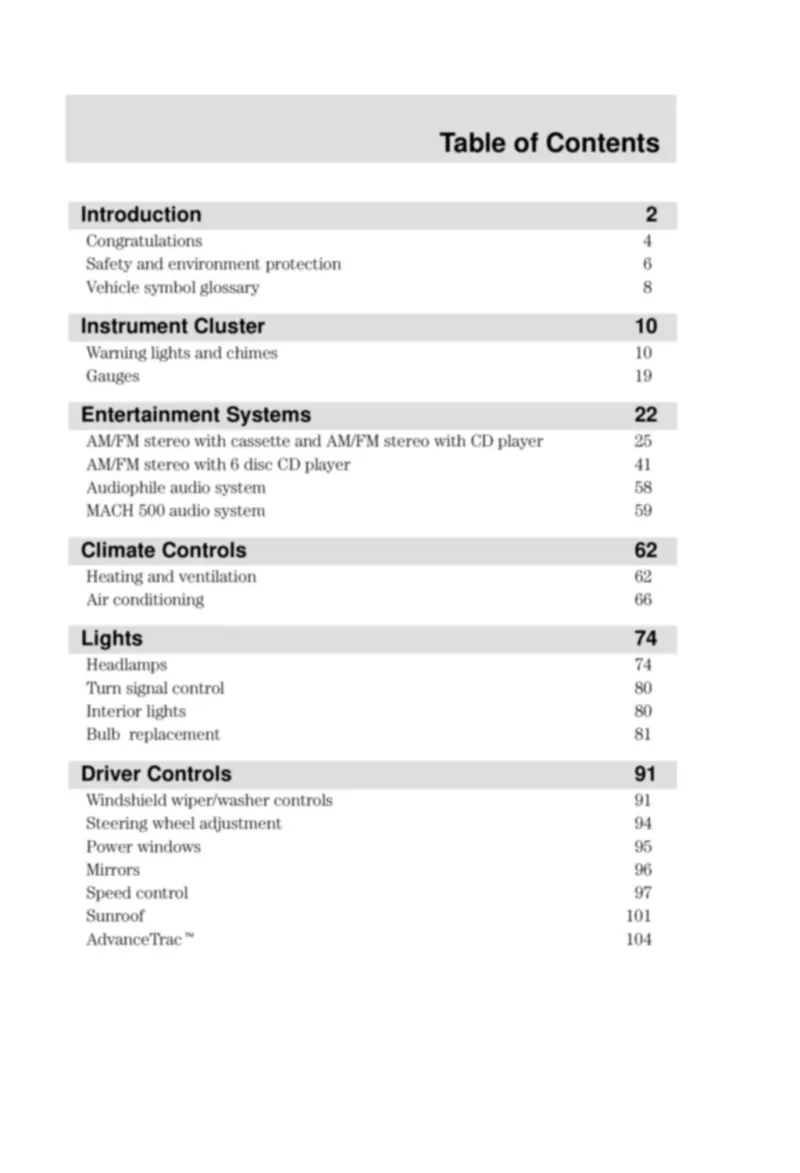Ford Focus owners manuals

(owner manual)

(owner manual)

(owner manual)

(owner manual)

(owner manual)

(owner manual)

(owner manual)

(owner manual)

(owner manual)

(owner manual)

(owner manual)

(owner manual)

(owner manual)

(owner manual)

(owner manual)

(owner manual)

(owner manual)

(owner manual)

Ford Focus specs
Owner Manual
The owner manual of the Ford Focus is an essential document that provides a wealth of information about the vehicle, aimed at enhancing the ownership experience. It is designed to assist owners in understanding the various features and functions of their car, ensuring that they can operate it safely and efficiently. The manual covers critical information—including vehicle controls, maintenance schedules, troubleshooting tips, and warranty details. It's important for owners to familiarize themselves with the manual, as it can help prevent potential issues and extend the life of the vehicle.
Model Overview
The Ford Focus has been a popular compact car since its introduction in the late 1990s. Known for its sporty styling, fuel efficiency, and engaging driving dynamics, the Focus appeals to a wide range of drivers—from those seeking practical transportation to enthusiasts looking for a fun ride. The vehicle is offered in various configurations, including sedan, hatchback, and sporty ST models. One of its standout features is the responsive handling and comfortable ride, making it a favorite among small car fans.
Trims
The Ford Focus comes in several trims, catering to different preferences and budgets. The base model usually includes essential features such as a rearview camera, Ford’s SYNC infotainment system, and a decent array of safety features. As you move up the trim levels, additional features become available. Higher trims might include leather upholstery, advanced navigation systems, premium audio systems, and sport-tuned suspension. The availability of features can vary by market and model year, so owners should refer to their specific year’s owner manual for detailed information on trim-specific features and options.
Known Problems
While the Ford Focus is generally a reliable vehicle, certain model years have been reported to have specific issues. Some common problems include transmission issues—particularly with the automatic transmission in certain models—electrical system malfunctions, and excessive oil consumption in older models. Additionally, some owners have reported problems with the door latches and sunroof leaks. It’s crucial for owners to refer to their owner manual for warranty coverage and guidance on addressing such concerns.
Maintenance Tips
Regular maintenance is vital for keeping the Ford Focus in optimal condition. Owners should adhere to the maintenance schedule outlined in the owner manual, including oil changes, tire rotations, brake inspections, and fluid checks. Using the recommended type of oil and following service intervals will help prolong engine life. Additionally, it's essential to keep tires properly inflated and to monitor tread wear, as this affects both safety and fuel efficiency. Paying attention to warning lights on the dashboard can also prevent major issues from developing into costly repairs.
FAQs
Q: Where can I find the recommended maintenance schedule for my Ford Focus?
A: The maintenance schedule is detailed in your owner manual and varies by model year and engine type.
Q: What type of fuel should I use in my Ford Focus?
A: Most Ford Focus models are designed to run on regular unleaded gasoline, but it's best to check your owner manual for the specific fuel recommendations for your engine type.
Q: What should I do if my check engine light comes on?
A: Refer to your owner manual for troubleshooting steps. It may indicate a minor issue or require immediate attention, depending on the situation. If you're unsure, it's advisable to consult with a qualified mechanic.
Q: How often should I check my tire pressure?
A: It's advisable to check tire pressure at least once a month and before long trips. Your owner manual will provide the correct pressure settings for your specific Focus model.
Ford Focus PDF owner manual
Ford Focus competitors
Ford Focus Manual Questions
Fill the form below and someone will help you!





